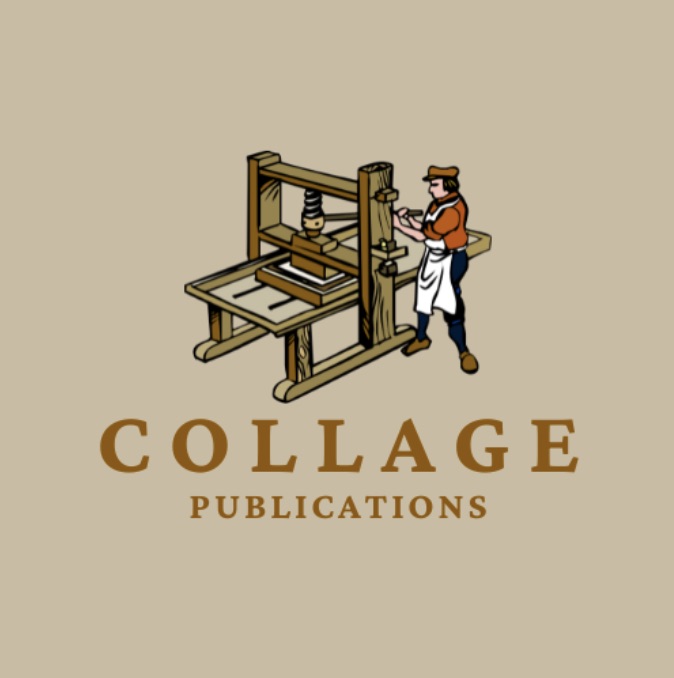Collage, the university’s student-run literary and fine arts magazine, is in the midst of a makeover.
Most students and faculty read The Decaturian, the newspaper on campus, and perhaps know of BURST Magazine via their collaboration through different courses and its multi-major involvement. However, the small chapbooks strewn on Shilling’s benches are often overlooked due to their anonymity or lack of flair; yet they are an important publication on campus that deserves as much appreciation as the others.
Previously run by former professor Dr. Stephen Frech, Collage has been handed to faculty advisor and professor of creative writing at Millikin, Dr. Carmella Braniger, who has moved away from the co-curricular nature of its past and has incorporated the magazine into the curriculum.
“Part of my philosophy is that students need to be getting some sort of credit for their work,” Braniger said.
She believes that students should receive compensation for the work they do, whether school–related or for an organization.
“Otherwise, it’s not ethical,” she said.
While Collage in years past relied on passionate students to edit, generate a call for submissions and develop a volume from scratch each year, it is now part of the Art of Publishing course offered to students in and outside the English major.
“The multimedia folks on staff we have a lot in common with, and partnering with them makes sense,” Braniger said.
Though Collage is a literary publication, one of its goals is to highlight media such as photography, digital or other art forms as well as short stories, poetry and essays.
Braniger hopes that students on campus will recognize Collage as a publication, one that their tuition is utilized for and encourages them to take a curiosity to.
Co-editor Tabitha Barowsky, an English literature and B.A. music double major, looks forward to bolstering the magazine’s presence on campus. Using her marketing skills to create an Instagram profile and accessible flyers, Barowsky has invited a technology–focused approach to soliciting submissions and gaining an audience.
“Starting an Instagram is going to help us,” Barowsky said. “And personally, that is where I get a lot of my information about stuff happening on campus.”
Adapting a social media presence is essential in an age where many students and adults go to look for happenings, news and events—especially if Collage wants to broaden its prospects in terms of submissions and visibility.
“It’s being completely revamped,” Isabella Blohm, co-editor and English creative writing major, said. “It’s important because the student-run format is run by students, for students.”
Blohm appreciates the magazine’s attainability for undergraduates looking to get their work published.
“It allows people to express themselves in an official format and doesn’t exclude people as much as traditional publishing does,” Blohm said.
The only requirement to submitting and possibly becoming a published writer or artist in Collage include emailing the magazine’s editors with a brief bio and the work one wishes to see in print. Collage’s Instagram page has a nifty Google form submission for on-the-go convenience.
Not every student who submits work will receive publication, however the chances are relatively high and therefore the editors encourage all artists and writers to submit their work to the publication.
“It’s a stepping stone in one’s writing career and looks good on a resume,” Blohm said.
Braniger is an advocate in uplifting work not typically in the limelight, specifically with her involvement with the Critical Storytelling series which highlights underrepresented voices across communities and demographics.
“Students can showcase what they are working on in poetry or graphic design workshop,” Braniger said. “Wherever they are creating, they can have it celebrated and showcased for their peers to support.”
Although submitting work to small campus publications such as BURST Magazine or Collage might seem small scale in terms of the grand publishing and art industry, it is a viable stepping stone to getting one’s work out in the world.
Creating a space for student organizations such as Collage can often be a strenuous endeavor, and its two new co-editors Barowsky and Blohm have responded to this modernized approach in a thoughtful and mature manner. They are equally excited to help the magazine grow more followers and help cultivate prospective artists and writers.
Though the pandemic caused many things to come to a screeching halt, it is necessary to encourage creatives to use outlets such as these to gain confidence in themselves and to give a platform to exhibit student voices across campus.

